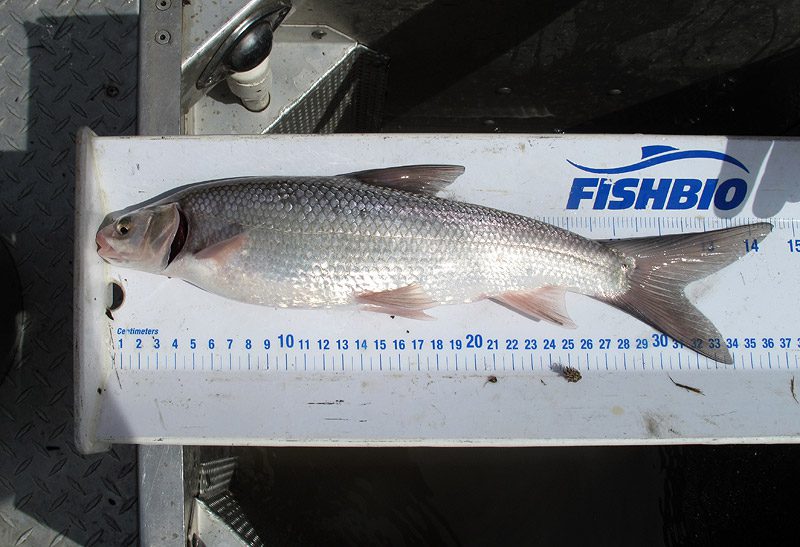Wednesday April 18, 2012

A species named for its appearance, the Sacramento splittail (Pogonichthys macrolepidotus) is a large, native cyprinid minnow with a deeply forked caudal fin (tail) that is found in California’s Sacramento-San Joaquin Delta. Splittail are highly dependent on seasonally flooded upland and riparian habitat of lower rivers and sloughs for spawning. The spawning period for splittail coincides with peak outflow, February through April, in the Central Valley. Unfortunately, most of the riparian habitat (98%) in the Central Valley has been lost to urban and agricultural encroachment (Duffy and Kahara 2011). With such an enormous loss of floodplain habitat, it is believed that their reproduction is now largely dependent on wet years when areas such as Yolo and Sutter bypasses are flooded. They were listed as a federally threatened species in 1999 and delisted in 2003. The fact that Sacramento splittail live five to seven years and are highly fertile (up to 100,000 eggs per female) has most likely prevented them from going extinct. After several below normal water years splittail appear to have made a rebound in 2011, a wet year. In 2011 a record number (8.9 million) of splittail were salvaged at the Delta pumps during water export operations. Although controversial, the record salvage could indicate that the population of splittail is increasing, since the average annual splittail salvaged between 1993 and 2011 is 1.2 million (Bay Institute 2012).
